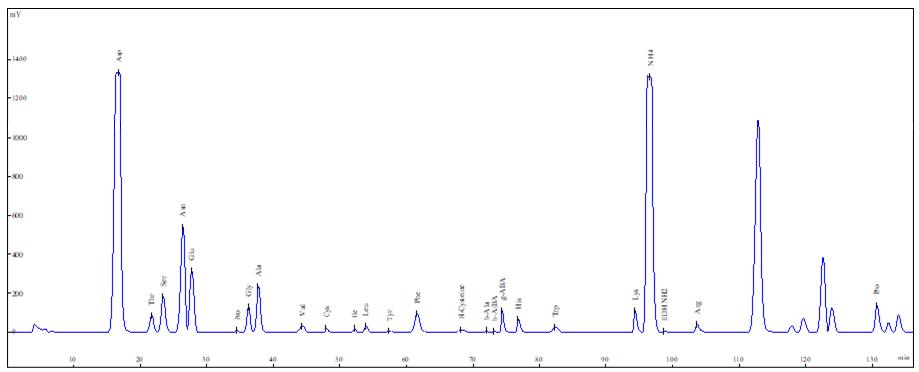Analytical question to determine the amino acid variation for influencing the flavour of tobacco (with Amino Acid Analyzer ARACUS)
Tobacco is a plant of the Nicotiana genus Solanaceae, an annual or limited perennial herb, with glandular hairs all over and strong roots. The stem is 0.7-2 meters high, and the base is slightly lignified. The leaves are oblong-lanceolate, lanceolate, oblong or ovate, with a gradually pointed tip, and a gradually narrowed base, and a ear-shaped and half-holding stem. The inflorescence is terminal, paniculate, and the flowers are many. The pedicels are 5-20 mm long. The capsule is ovate or oblong, approximately equal to the persistent calyx in length. The seeds are round or broad and oblong, about 0.5 mm in diameter, brown. Flower and fruit in summer and autumn.
Tobacco plants contain a wide range of bioactive compounds, including alkaloids, polyphenols, and amino acids, which influence both plant physiology and the sensory characteristics of tobacco leaves after curing (Zhou et al., 2014).
Cultivation of tobacco
Tobacco is native to South America and is widely cultivated in various provinces and regions in North and South China. It is a thermophilic crop, which is more sensitive to temperature. Different temperature conditions have a great impact on tobacco quality and yield. High-quality tobacco requires lower temperature in the early stage and higher in the later stage.
Environmental factors such as soil nitrogen content, temperature, and humidity significantly affect the free amino acid composition of tobacco leaves, which in turn influences their flavor precursors (Meng et al., 2020).
Tobacco can be used as a raw material in the tobacco industry. The whole plant can also be used as a pesticide and insecticide. It also can be made into medicine for anesthesia, sweating, sedation and emetics, etc.
Maillard reaction in tobacco
Maillard reaction often occurs in tobacco preparation, aging, processing, preservation and burning, and its reaction products play a major role in the color and flavor of tobacco. Since the 1970s, patents and literatures using browning reaction products as tobacco flavoring agents have appeared in the United States, Japan, and Germany. In the beginning, most of the reactions in the reports used pure amino acids and reducing sugars or other carbonyl compounds (such as isovaleraldehyde, diacetyl, etc.) as reaction materials, and polyols as solvents. Later, a variety of amino acids and natural proteins were developed to replace a single amino acid. Studies have shown that the reaction product of a mixture of multiple amino acids and sugar is better than the reaction product of a single amino acid. It has a more obvious effect on improving the quality of burley tobacco.
For instance, lysine, proline, and glutamic acid have been identified as key contributors to the formation of flavor-relevant volatile compounds via Maillard reactions in tobacco processing (Zhou et al., 2014).
A lot of research shows that Maillard reaction product can be used as a natural antioxidant. The Maillard reaction products are obtained through optimization of different conditions. They can effectively remove the free radicals appearing in the smoke while enhancing the flavor of tobacco, so as to achieve the purpose of reducing the tar and harm of cigarette products.
Additionally, the antioxidant properties of Maillard reaction products may also contribute to the stabilization of volatile aroma compounds during tobacco storage and aging, further enhancing the sensory profile of the final product (Sun et al., 2013).
Maillard reaction products with antioxidant effect will have good application prospects in tobacco.

References:
- Zhou X, Jin Z, Xu C, et al. “Amino acids and Maillard reaction products in tobacco leaves: Their role in flavor development and antioxidant activity.” Food Chem. 2014;151:379-385. doi:10.1016/j.foodchem.2013.11.039
- Meng H, Zhang J, Shao H, et al. “Effects of environmental factors on amino acid metabolism and aroma precursors in tobacco leaves.” Ind Crops Prod. 2020;149:112351. doi:10.1016/j.indcrop.2020.112351
- Sun Q, Jiang H, Zhao Y. “The antioxidative activity of Maillard reaction products and their role in tobacco quality improvement.” J Agric Food Chem. 2013;61(39):9515-9521. doi:10.1021/jf402335m

